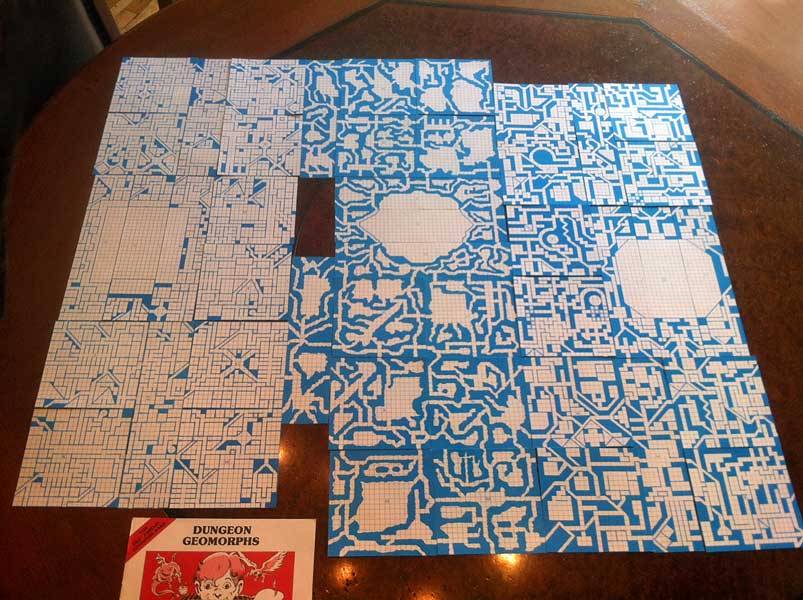When I presented
missile range penalties for Explore, I gave a to-hit penalty of -1 per
range increment over 20’ (where ranges go up as 20’, 30’, 40’, 60’ etc., doubling
every other category). This fits the main overriding requirement -
"simple" – but was unsatisfactory for a number of reasons which have
niggled:
1)
Does this increase in difficulty reflect the real world?
2)
What about large or small targets?
3)
What about shooting long range against mass targets?
4)
Should there be a damage penalty for long range?
I left
this for a while to ponder over, until I realised that I could resolve the
first three together, the fourth I'll talk about another day.
The
revised rules are:
For
missile attacks there is a to-hit penalty of -3 per range increment over 30'.
Large or
small creatures get a penalty versus missile attacks equal to their size.
Missile attacks
versus mass targets get -6 at any range.
If you
care which of the mass targets is hit, roll to choose a target, then roll to
hit it.
The
details of how I derived these rules follows, but the derivation itself is of
less importance than the fact that they are derived from observations, not purely
arbitrary, which is a core design philosophy for Explore. When you design this way
you find that the rules work together, whereas with independent rulings they
often don't mesh well.
To-Hit Penalties For Range
Following
Delta's post on archery accuracy, I agree that it is best to model increasing
the range to a target by instead reducing the size of the target. That is, if
you double the range of a target then that's the same as making the target one
half the diameter. Also I agree you can model the distribution of shots as a
bivariate normal distribution (i.e. both the x and y positions of the shot are
normally distributed). Adjusting the figures to match the data he cites for
"Britain's finest archers" I get the same answers as his calculations.
For the range categories in Explore you get:
Calculated
|
Explore
|
|||
Range
|
Chance
|
Range
|
Target #
|
Chance
|
113'
|
100%
|
120'
|
2
|
100%
|
160'
|
96%
|
160'
|
5
|
94%
|
226'
|
80%
|
240'
|
8
|
78%
|
320'
|
56%
|
320'
|
11
|
52%
|
452'
|
33%
|
480'
|
14
|
28%
|
640'
|
18%
|
640'
|
17
|
12%
|
905'
|
10%
|
960'
|
20
|
5.2%
|
4.9%
|
23
|
2.6%
|
||
2.5%
|
26
|
1.2%
|
||
1.3%
|
29
|
0.6%
|
||
I have
extended the list past normal ranges as those values will apply at shorter
range for lesser archers, added the "simplified" range category, and
the equivalent target numbers and chances with 2d10 (open).
Each
increased range category equates to halving the area of the target, and as such you would expect the ratio of
successive chances to tend towards 2. You can see this at the bottom end of the
results (10%, 4.9%, 2.5% etc). This matches exactly adding three onto the
target number in Explore.
On the
right half we give the new rule for Explore (each increase in range gives -3). We
can get an exact match for the start of the results, or the end of the results,
but not both together. I have opted for the low range results to be accurate,
with the long range ones being half the predicted, with the hand-waving explanation
that long range presents extra difficulties in judging distance.
Point Blank Range
In Explore
"finest archer" would be +13 (+3 from stat, +10 rank bonus). The
lowest parry you can get is 4 (10 -3 for stat -3 for surprise), so that's the
parry for a stationary target. So the standard target # they need would be -9,
hence they're getting 11 penalty for range, so roughly four range categories.
So this would make point blank to be 30'. This is a slight increase from the
previous 20', but as range penalties are now quite severe that seems fair.
Large and Small Targets
For large
targets, +5 in size makes you double the height and six times the weight, so 2
x 1.73 x 1.73 times bigger so 3.46 times the cross-section. Hence for every +3
in size you’re roughly double the cross section, so present the same size
target as being one range step nearer, so should get -3 versus missiles. Thus
you should get a penalty versus missiles equal to your size (which is a +3 bonus
versus missiles for halflings).
Shots versus Mass Targets
Consider shooting
at a mass of targets compared to a target placed 30' away. A single person 40'
away would fill half that target. Four people 80' away would also fill half
that target, and even 512 people at 960' away. Hence each group of people is
the same difficulty to hit - it's the density of the troops that matters. Since
troops are unlikely to completely fill the target, I'm going with -6 versus
massed troops (instead of -3).
In summary, following Delta's observations about real world archery gives us a single principle that gives us rules for three different situations.










